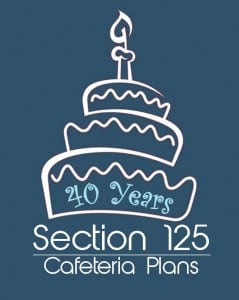Home / Blog / History of the medical expense tax deduction
History of the medical expense tax deduction

Since the Section 125 Cafeteria Plan could not exist without the medical expense tax deduction, we thought readers might be interested in a brief history of that deduction.
How we got it
The 16th amendment gives Congress the power to levy and collect income tax. Ratified in 1913, the original income tax only allowed personal exemptions. There was no consideration for individuals and families struggling with high medical expenses.
The Revenue Act of 1942 introduced two tax deductions: one for investments, and the other for medical expenses.
These deductions were intended to provide specific tax relief “during the existing emergency,” otherwise known as the tax increases used to pay for World War II. Deductions would reward those who invested in the economy more than others and lessen the burden for those with high medical expenditures — some that might be for injured soldiers returning home.
The tax deduction for medical expenses was not allowed to expire after the war, however. In 1954, it became permanent and was given its own section in the tax code.
How we almost lost it
Over the next 60 years, the medical expense deduction was tweaked until Congress and the Treasury got it just right. Americans depended on it, especially those with high medical costs due to chronic illness or disability.
Then, in the late 2017 lead-up to passing the Tax Cuts and Jobs Act, the Republican-led House of Representatives proposed eliminating the medical expense tax deduction. An immediate uproar arose among the chronically ill, the disabled, their caregivers, and their advocates.
Most Americans take advantage of the medical expense tax deduction in one way or another. Those fortunate enough to have an employer with a Section 125 Cafeteria Plan get it via the savings from pre-tax salary deductions that pay our share of premiums and contributions made through the plan. Tax savings can amount to as much as 40% of the amount paid; nothing to sneeze at, as they say.
As you know, that provision in the House version of the bill did not survive reconciliation with the Senate version, which had no such clause from the start. Having survived this latest threat, the medical expense tax deduction is likely to maintain its place as a permanent part of the U. S. tax code for decades to come.

Form 1040 vs. Section 125
Taking the medical expense tax deduction directly requires itemizing the deduction on Schedule A with Form 1040, and waiting until the end of the year to do that.
With a Section 125 Cafeteria Plan, employees get tax savings in every paycheck. Plus, they save the 7.65% Social Security and Medicare (FICA) tax, additional savings not available through a 1040 deduction.
On top of the employee savings, employers get a thank-you bonus of sorts by eliminating their portion of FICA tax on dollars employees pre-tax through the Section 125 Cafeteria Plan.
It’s all based on the simple idea that medical expenses should be tax deductible.
More in the Section 125 Plan’s 40th birthday series: